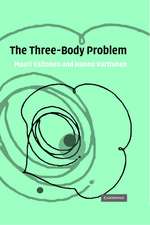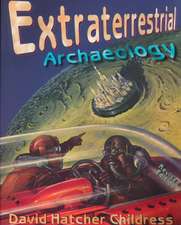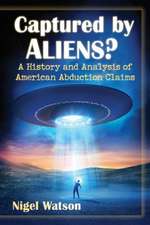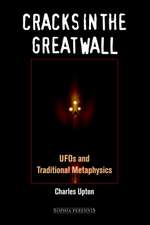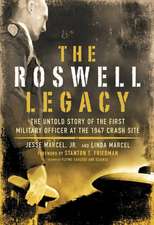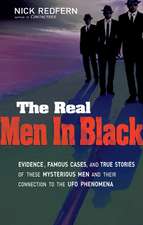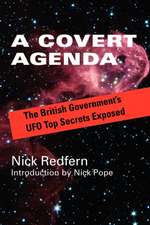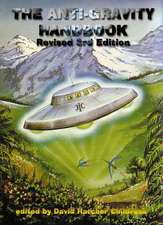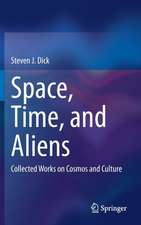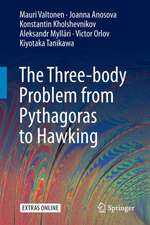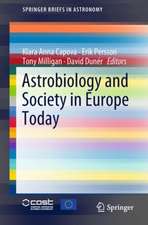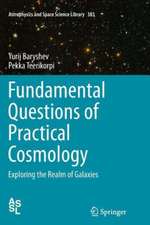The Evolving Universe and the Origin of Life: The Search for Our Cosmic Roots
Autor Pekka Teerikorpi, Mauri Valtonen, Kirsi Lehto, Harry Lehto, Gene Byrd, Arthur Cherninen Limba Engleză Hardback – 26 sep 2019
The Evolving Universe and the Origin of Life describes, complete with fascinating biographical details of the thinkers involved, a history of the universe as interpreted by the expanding body of knowledge of humankind. From subatomic particles to the protein chains that form life, and expanding in scale to the entire universe, this book covers the science that explains how we came to be.
This book contains a great breadth of knowledge, from astronomy and physics to chemistry and biology. The second edition brings this story up to date, chronicling scientific achievements in recent years in such fields of research as cosmology, the large-scale architecture of the universe, black holes, exoplanets, and the search for extraterrestrial life.
With over 250 figures, this is a non-technical, easy-to-read textbook at an introductory college level that is ideal for anyone interested in science as well as its history.
| Toate formatele și edițiile | Preț | Express |
|---|---|---|
| Paperback (1) | 450.74 lei 38-44 zile | |
| Springer International Publishing – 26 sep 2020 | 450.74 lei 38-44 zile | |
| Hardback (1) | 505.35 lei 38-44 zile | |
| Springer International Publishing – 26 sep 2019 | 505.35 lei 38-44 zile |
Preț: 505.35 lei
Preț vechi: 623.89 lei
-19% Nou
Puncte Express: 758
Preț estimativ în valută:
96.71€ • 100.59$ • 79.84£
96.71€ • 100.59$ • 79.84£
Carte tipărită la comandă
Livrare economică 08-14 aprilie
Preluare comenzi: 021 569.72.76
Specificații
ISBN-13: 9783030179205
ISBN-10: 3030179206
Pagini: 561
Ilustrații: XIX, 584 p. 258 illus., 34 illus. in color.
Dimensiuni: 155 x 235 x 31 mm
Greutate: 1.32 kg
Ediția:2nd ed. 2019
Editura: Springer International Publishing
Colecția Springer
Locul publicării:Cham, Switzerland
ISBN-10: 3030179206
Pagini: 561
Ilustrații: XIX, 584 p. 258 illus., 34 illus. in color.
Dimensiuni: 155 x 235 x 31 mm
Greutate: 1.32 kg
Ediția:2nd ed. 2019
Editura: Springer International Publishing
Colecția Springer
Locul publicării:Cham, Switzerland
Cuprins
Preface to the Second Edition.- Preface to the First Edition.- Part 1: The Widening World View.- When Science Was Born.- Science in Athens.- Planetary Spheres and the Size of the Universe.- Medieval Cosmology.- The Roots of the Copernican Revolution.- The True Laws of Planetary Motion Revealed.- Galileo Galilei and His Successors.- How Far Away Are the Stars?.- The Scale of the Solar System.- Part 2: Physical Laws of Nature.- Newton.- Celestial Mechanics.- Nature of Light.- Electricity and Magnetism.- Time and Space.- Curved Space and Gravity.- Atoms and Nuclei.- Strange Microworld.- Elementary Particles.- Part 3: The Universe.- Stars: Cosmic Fusion Reactors.- The Riddle of the Milky Way.- Entering the Galaxy Universe.- Large-scale Structure of the Universe.- Finite or Infinite Universe: Cosmological Models.- When it all Began: Big Bang.- The Dark Side of the Universe.- Active Galaxies: Messages Through Radio Waves.- Origin of Galaxies.- Part 4: Life in the Universe.- The Nature of Life.- The Origin of Earth and its Moon.- Emergence and Evolution of Life.- Life and our Solar System.- Extrasolar Planetary Systems and Life in other Solar Systems.- Human’s Role in the Universe.- Recommended Reading.- Index.
Notă biografică
Pekka Teerikorpi defended his doctoral thesis at the University of Turku (1981), where he worked after that at teaching and research positions (now retired, but affiliated as adjunct professor). He has studied extragalactic astronomy and cosmology, especially questions related to the cosmic distance scale, the expansion rate of the universe (the Hubble constant) and dark energy. He has also researched interstellar dust, the rotation of the Milky Way and active galactic nuclei. He is a coauthor of the books Discovery of Cosmic Fractals (World Scientific 2002), The Evolving Universe and the Origin of Life (Springer 2009) Fundamental Questions of Practical Cosmology (Springer 2012), and Paths to Dark Energy (De Gruyer 2012). Additionally, he has written several books in Finnish about the history and spirit of astronomy.
Gene Byrd (B.S Texas A&M University 1968; PhD 1974 from the Univ. ofTexas) is a Professor of Astronomy (emeritus) at the University of Alabama. His career has been a mixture of teaching, research and service. He is a University of Alabama College of Arts and Sciences Distinguished Teaching Fellow and has published texts and research on teaching. He studies the theory and observations of the dynamics of galaxies, discovering the pattern in NGC4622, which, counterintuitively, has inner and outer spiral arms winding in opposite directions. Dr. Byrd served as Secretary and Chair of the American Astronomical Society’s Division on Dynamical Astronomy. He is authored over 100 articles and books, including a senior/graduate level text, Paths to Dark Energy: Theory and Observation (De Gryuter 2012), along with articles on teaching and the history of astronomy.
Arthur D. Chernin graduated from Leningrad Polytechnic Instutute in 1963. He got his PhD in 1969 from Ioffe PhysTech Institute and Dr Sci in 1979 from Pulkovo Observatory in astrophysics. He joined Theory Department of Ioffe institute (1963-1981), became professor in Department of Physics and Astronomy at the Hertsen University of Leningrad (1981-1990) and then Sternberg Astronomy Institute of Moscow State University. He has collaborated with his coauthors on cosmological topics such as dark matter, dark energy, andgalaxy formation. Dr. Chernin is a coauthor of the books Alexander A. Friedmann: The Man who made the Universe expand (Cambridge UP 2006), Cosmology (URSS, Moscow 2007), The Evolving Universe and the Origin of Life (Springer 2009), Paths to Dark Energy (De Gruyter 2012) as well as a number of books in the Russian language.Harry Lehto got his MSc in Astronomy at the Univ. of Turku, at the faculty of Mathematics and Natural Science, in 1982, and his PhD at the Univ. of Virginia, Charlottesville, Dept. of Astronomy, in 1989. After his degree he worked as a postdoctoral fellow at the University of Oxford and University of Sourhampton, UK, and since 1991, at the University of Turku, Tuorla Observatory, Dept of Physics and Astronomy, in various teaching and research positions. He was the director of the observatory from 2010 to 2013. His career has covered observations from X-rays to radio waves, and included analysis of time series in nearly all of his work. The work has covered quasars, magnetic cataclysmic variable stars and dynamical studies of planetary systems. He has a long and profound interest in nature. He took part in the Rosetta mission studying the comet 67P/Churyumov-Gerasimenko with the COSIMA instrument in search of elements and molecules important for prebiotic evolution. Since the early 2000’s, he has been teaching courses on Astrobiology and has also written multiple scientific and popular articles on this field.
Kirsi Lehto got her MSc at the Univ. of Helsinki, faculty of Agriculture, in 1981, and her PhD at the Univ. of California, Riverside, Dept. of Plant Pathology, in 1989. After her degree she worked as a postdoctoral fellow at the Imperial College, London, and since 2001, at the University of Turku, at the Departments of Biology and Biochemistry, in various teaching and research positions. Her earlier research focused on the various gene expression regulatory mechanisms of small RNA viruses, and in later years, on the role of RNA silencing and silencing suppression in the plant-virus interactions. Since the early 2000’s she has been teaching courses on Astrobiology and on the theories of the Origin of Life, and has also written multiple scientific and popular articles on these topics.
Mauri J. Valtonen graduated from the University of Helsinki in 1968, and did graduate work at the University of Cambridge in 1971-1974 on the three-body problem and the slingshot theory of radio sources. In 1976, he joined the Department of Physics and Astronomy at the University of Alabama. After returning to Finland, he became professor of astronomy at the University of Turku. He has collaborated with his co-authors on cosmological topics such as dark matter, simulations of disk galaxies and the binary black hole system OJ287. Dr. Valtonen is a coauthor of The Three-body Problem (Cambridge UP 2006), Cosmology (URSS, Moscow 2007), The Evolving Universe and the Origin of Life (Springer 2009), Paths to Dark Energy (De Gruyter 2012) and The Three-body Problem from Pythagoras to Hawking (Springer 2016) as well as a number of books in the Finnish language.
Gene Byrd (B.S Texas A&M University 1968; PhD 1974 from the Univ. ofTexas) is a Professor of Astronomy (emeritus) at the University of Alabama. His career has been a mixture of teaching, research and service. He is a University of Alabama College of Arts and Sciences Distinguished Teaching Fellow and has published texts and research on teaching. He studies the theory and observations of the dynamics of galaxies, discovering the pattern in NGC4622, which, counterintuitively, has inner and outer spiral arms winding in opposite directions. Dr. Byrd served as Secretary and Chair of the American Astronomical Society’s Division on Dynamical Astronomy. He is authored over 100 articles and books, including a senior/graduate level text, Paths to Dark Energy: Theory and Observation (De Gryuter 2012), along with articles on teaching and the history of astronomy.
Arthur D. Chernin graduated from Leningrad Polytechnic Instutute in 1963. He got his PhD in 1969 from Ioffe PhysTech Institute and Dr Sci in 1979 from Pulkovo Observatory in astrophysics. He joined Theory Department of Ioffe institute (1963-1981), became professor in Department of Physics and Astronomy at the Hertsen University of Leningrad (1981-1990) and then Sternberg Astronomy Institute of Moscow State University. He has collaborated with his coauthors on cosmological topics such as dark matter, dark energy, andgalaxy formation. Dr. Chernin is a coauthor of the books Alexander A. Friedmann: The Man who made the Universe expand (Cambridge UP 2006), Cosmology (URSS, Moscow 2007), The Evolving Universe and the Origin of Life (Springer 2009), Paths to Dark Energy (De Gruyter 2012) as well as a number of books in the Russian language.Harry Lehto got his MSc in Astronomy at the Univ. of Turku, at the faculty of Mathematics and Natural Science, in 1982, and his PhD at the Univ. of Virginia, Charlottesville, Dept. of Astronomy, in 1989. After his degree he worked as a postdoctoral fellow at the University of Oxford and University of Sourhampton, UK, and since 1991, at the University of Turku, Tuorla Observatory, Dept of Physics and Astronomy, in various teaching and research positions. He was the director of the observatory from 2010 to 2013. His career has covered observations from X-rays to radio waves, and included analysis of time series in nearly all of his work. The work has covered quasars, magnetic cataclysmic variable stars and dynamical studies of planetary systems. He has a long and profound interest in nature. He took part in the Rosetta mission studying the comet 67P/Churyumov-Gerasimenko with the COSIMA instrument in search of elements and molecules important for prebiotic evolution. Since the early 2000’s, he has been teaching courses on Astrobiology and has also written multiple scientific and popular articles on this field.
Kirsi Lehto got her MSc at the Univ. of Helsinki, faculty of Agriculture, in 1981, and her PhD at the Univ. of California, Riverside, Dept. of Plant Pathology, in 1989. After her degree she worked as a postdoctoral fellow at the Imperial College, London, and since 2001, at the University of Turku, at the Departments of Biology and Biochemistry, in various teaching and research positions. Her earlier research focused on the various gene expression regulatory mechanisms of small RNA viruses, and in later years, on the role of RNA silencing and silencing suppression in the plant-virus interactions. Since the early 2000’s she has been teaching courses on Astrobiology and on the theories of the Origin of Life, and has also written multiple scientific and popular articles on these topics.
Mauri J. Valtonen graduated from the University of Helsinki in 1968, and did graduate work at the University of Cambridge in 1971-1974 on the three-body problem and the slingshot theory of radio sources. In 1976, he joined the Department of Physics and Astronomy at the University of Alabama. After returning to Finland, he became professor of astronomy at the University of Turku. He has collaborated with his co-authors on cosmological topics such as dark matter, simulations of disk galaxies and the binary black hole system OJ287. Dr. Valtonen is a coauthor of The Three-body Problem (Cambridge UP 2006), Cosmology (URSS, Moscow 2007), The Evolving Universe and the Origin of Life (Springer 2009), Paths to Dark Energy (De Gruyter 2012) and The Three-body Problem from Pythagoras to Hawking (Springer 2016) as well as a number of books in the Finnish language.
Textul de pe ultima copertă
Regarding his discoveries, Sir Isaac Newton famously said, "If I have seen further it is by standing upon the shoulders of giants."
The Evolving Universe and the Origin of Life describes, complete with fascinating biographical details of the thinkers involved, a history of the universe as interpreted by the expanding body of knowledge of humankind. From subatomic particles to the protein chains that form life, and expanding in scale to the entire universe, this book covers the science that explains how we came to be.
This book contains a great breadth of knowledge, from astronomy and physics to chemistry and biology. The second edition brings this story up to date, chronicling scientific achievements in recent years in such fields of research as cosmology, the large-scale architecture of the universe, black holes, exoplanets, and the search for extraterrestrial life.
With over 250 figures, this is a non-technical, easy-to-read textbook at an introductory college level that is ideal for anyone interested in science as well as its history.
The Evolving Universe and the Origin of Life describes, complete with fascinating biographical details of the thinkers involved, a history of the universe as interpreted by the expanding body of knowledge of humankind. From subatomic particles to the protein chains that form life, and expanding in scale to the entire universe, this book covers the science that explains how we came to be.
This book contains a great breadth of knowledge, from astronomy and physics to chemistry and biology. The second edition brings this story up to date, chronicling scientific achievements in recent years in such fields of research as cosmology, the large-scale architecture of the universe, black holes, exoplanets, and the search for extraterrestrial life.
With over 250 figures, this is a non-technical, easy-to-read textbook at an introductory college level that is ideal for anyone interested in science as well as its history.
Caracteristici
A simple, nontechnical introduction to our current understanding of the physical world Structures scientific concepts chronologically, emphasizing historical context and development Divided into four thematic sections that weave together our multidisciplinary knowledge of the universe

